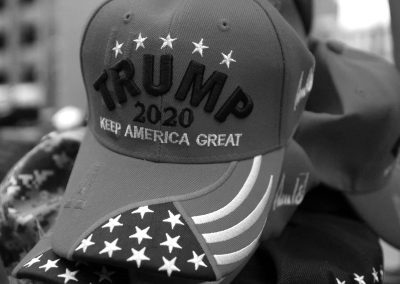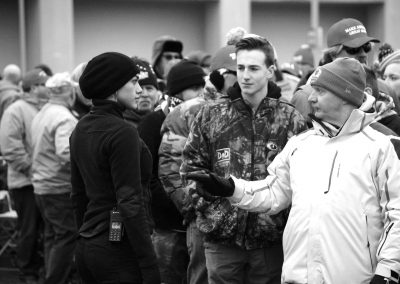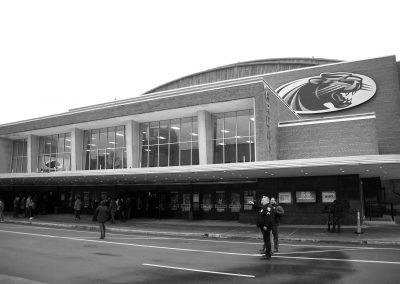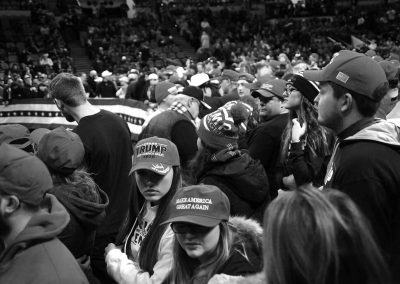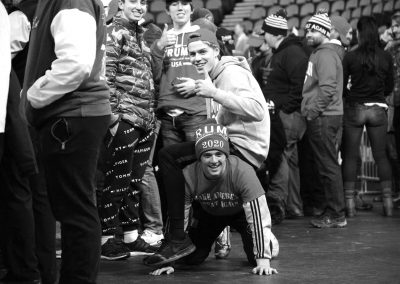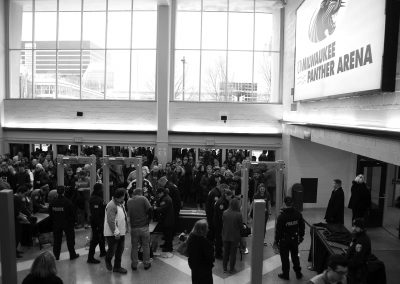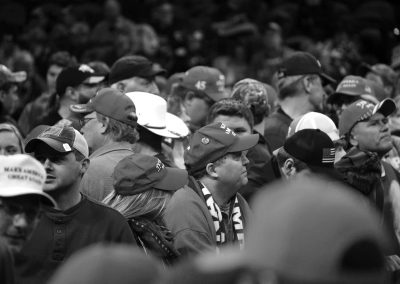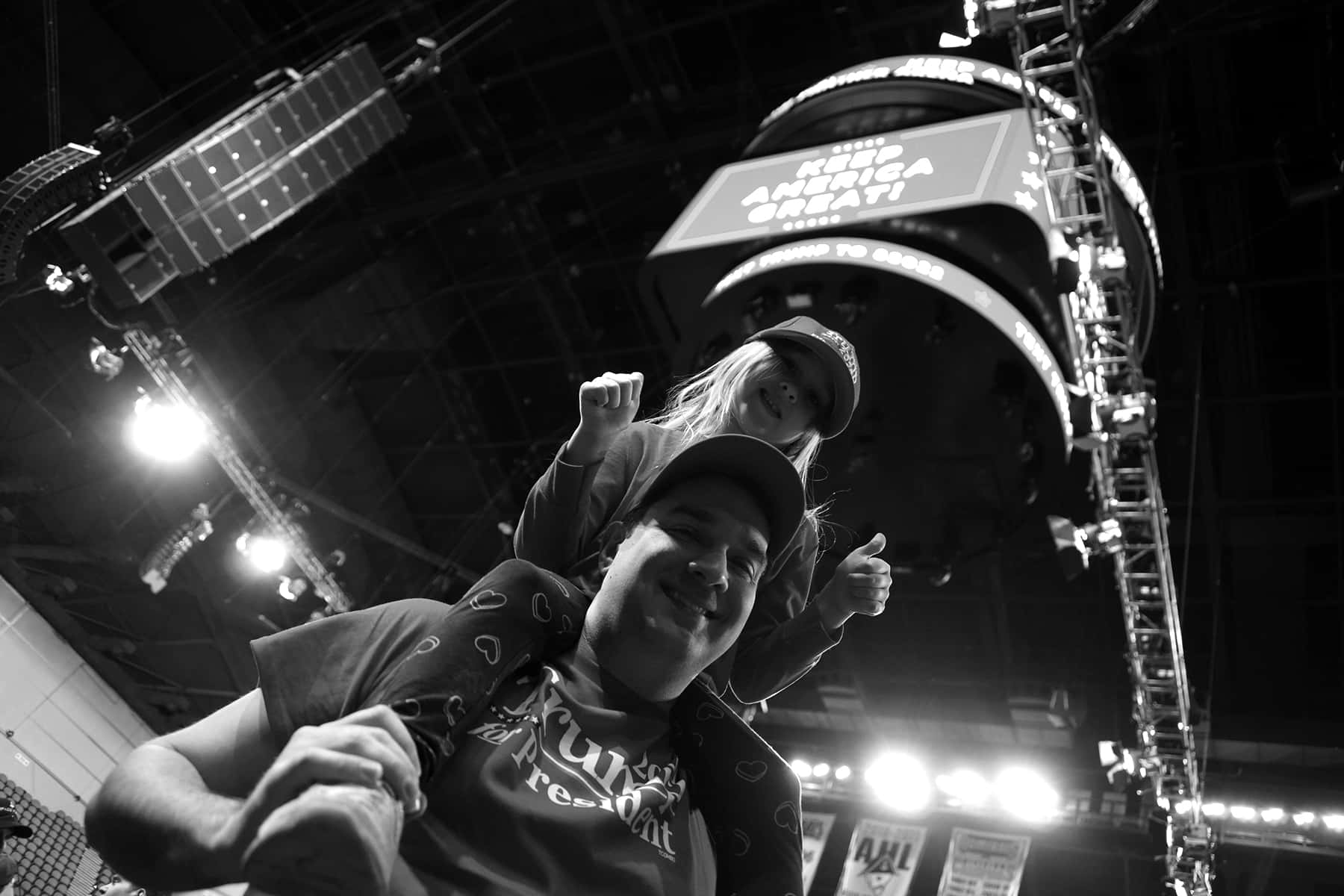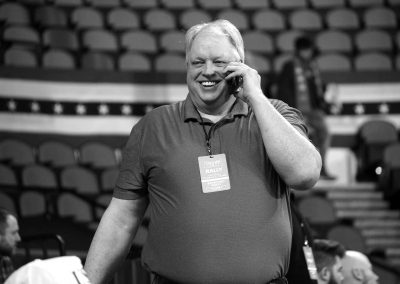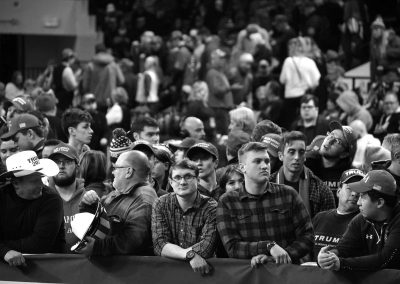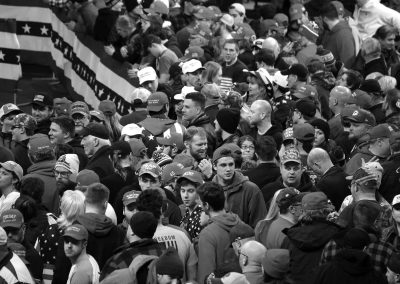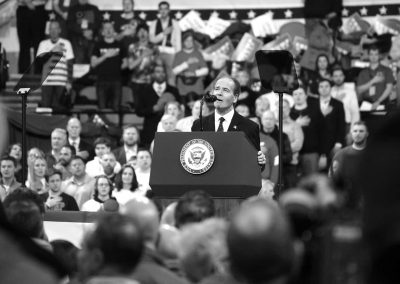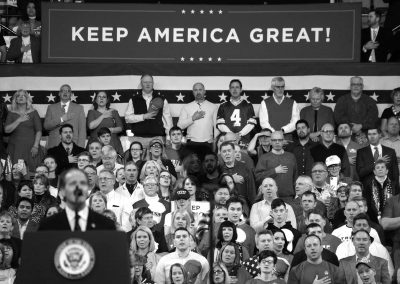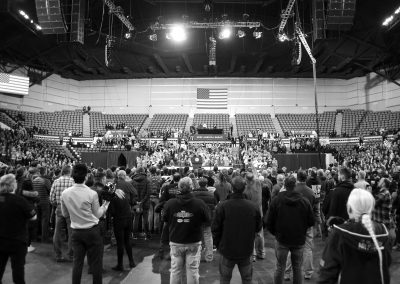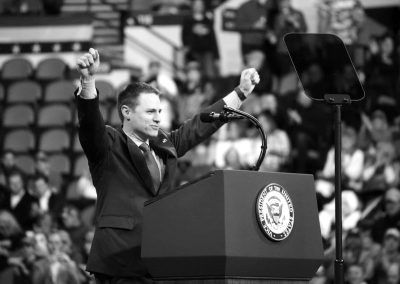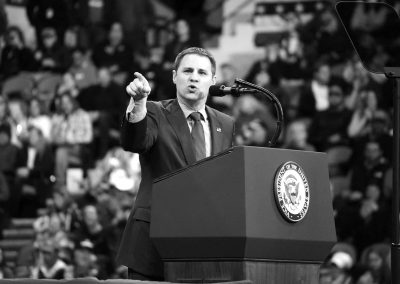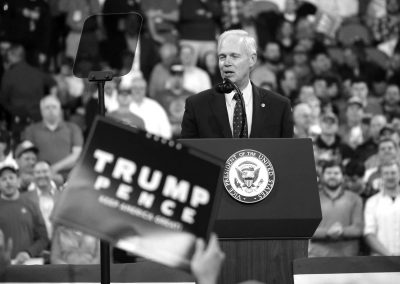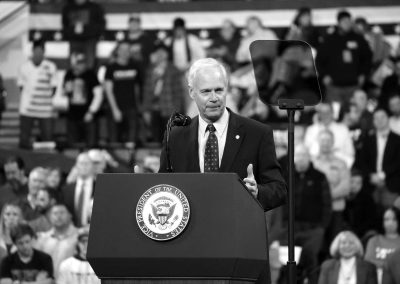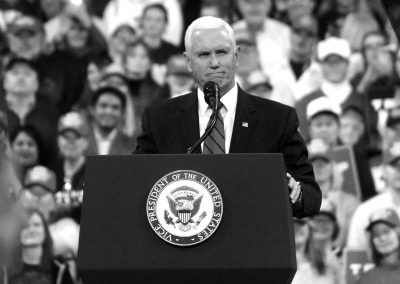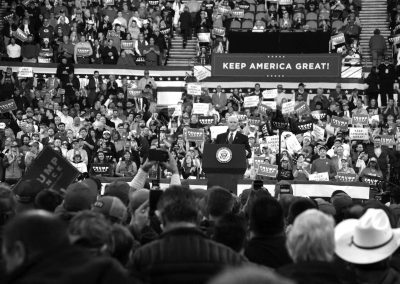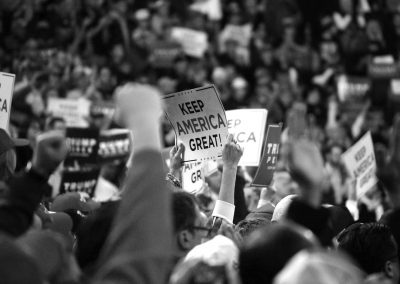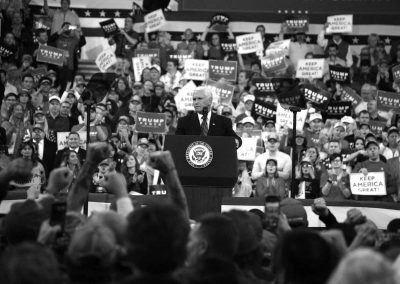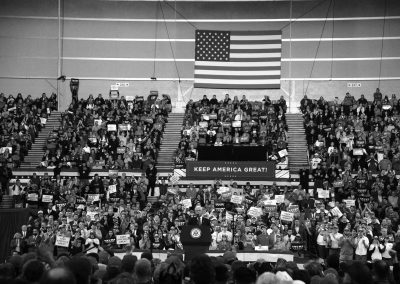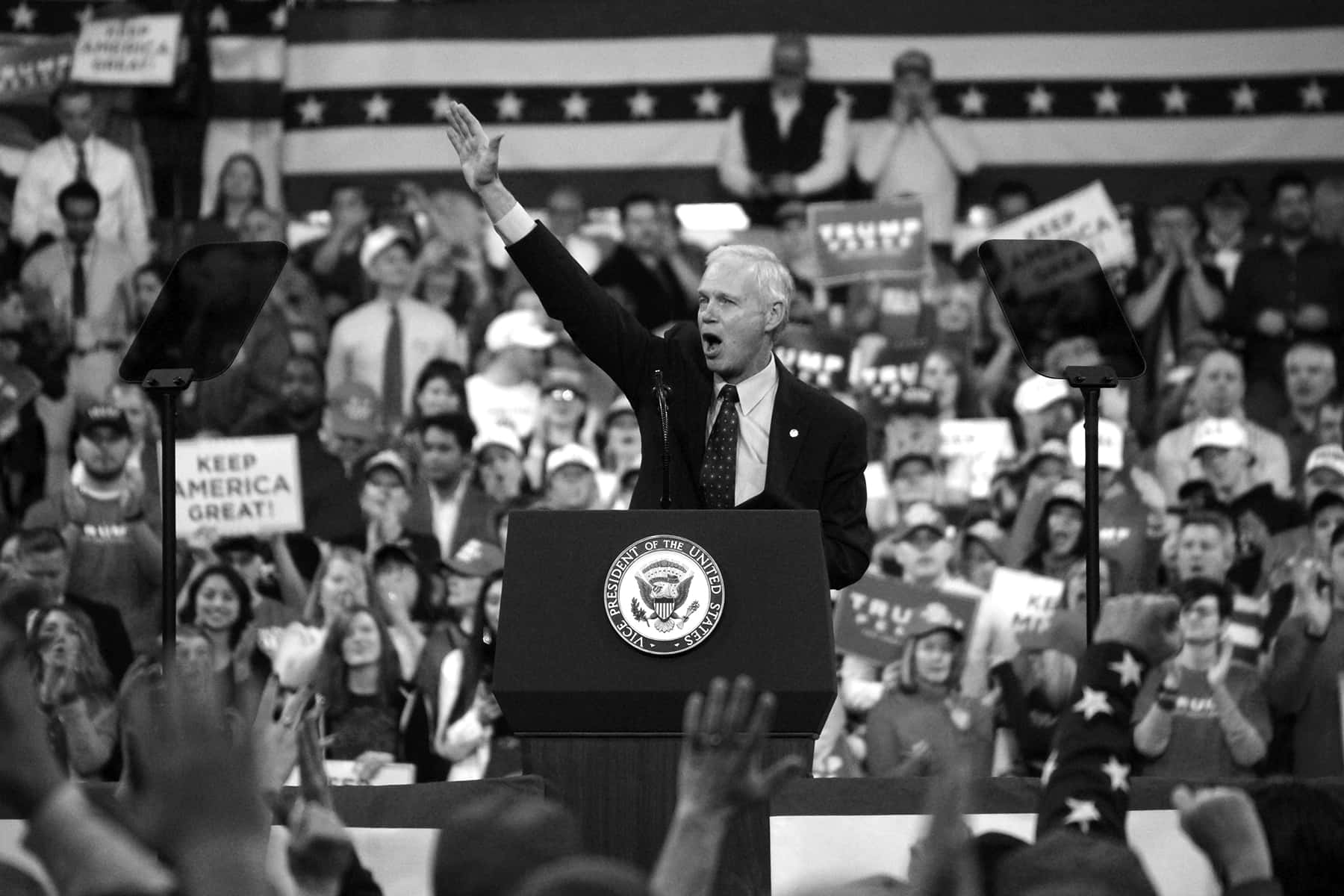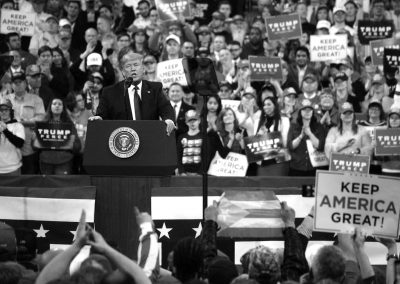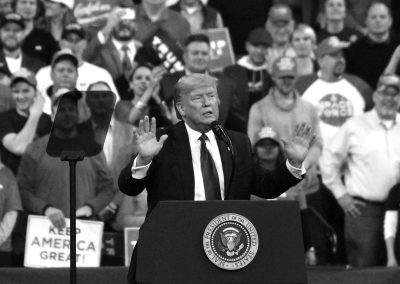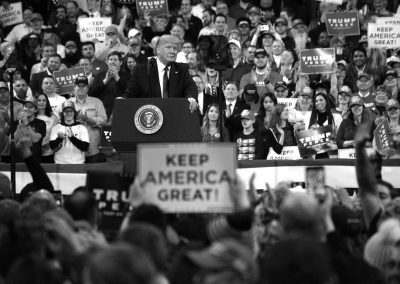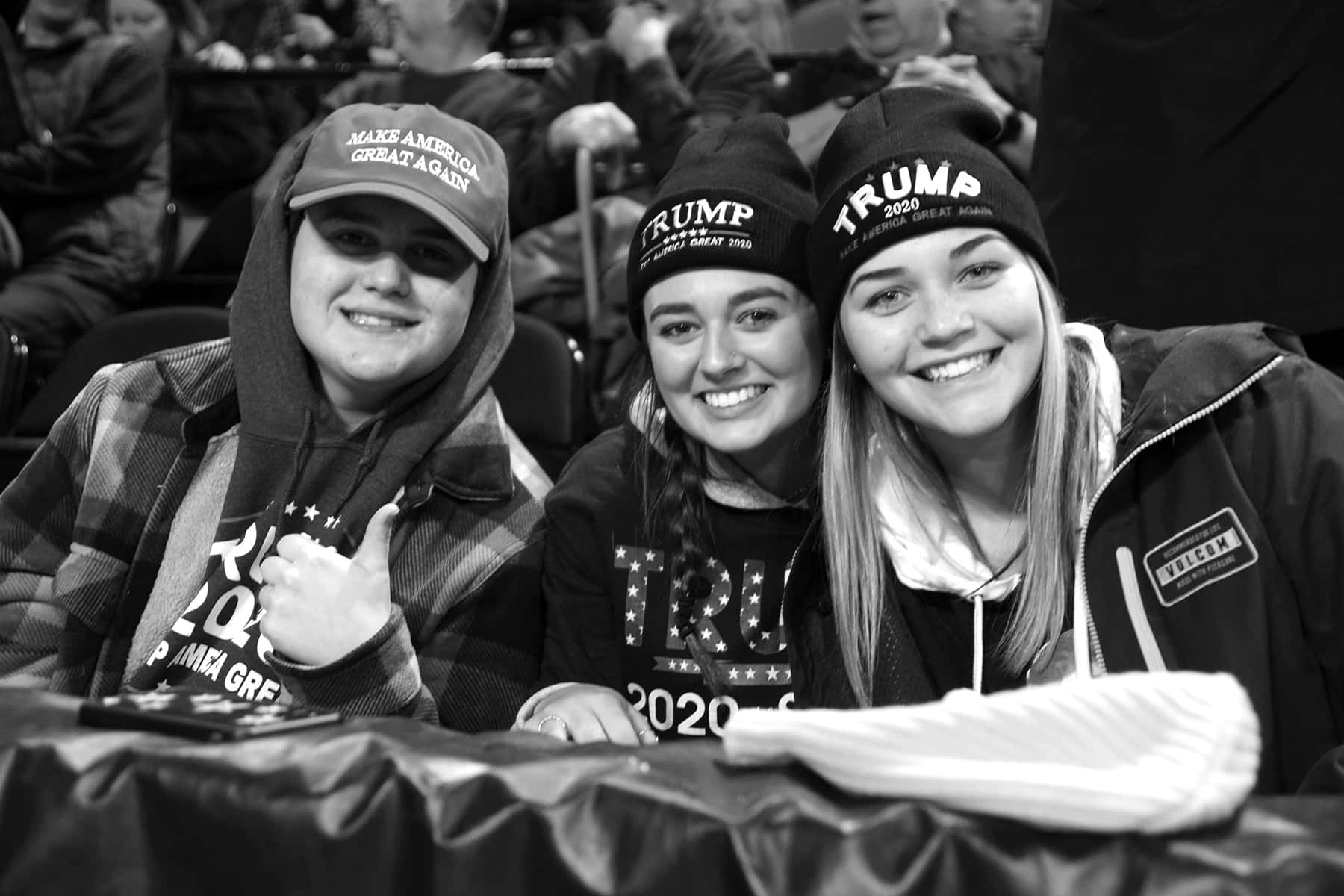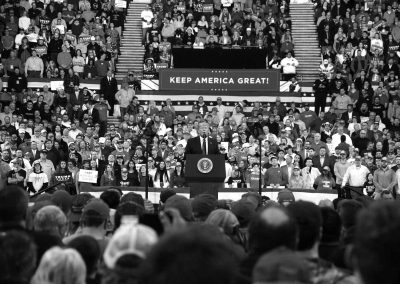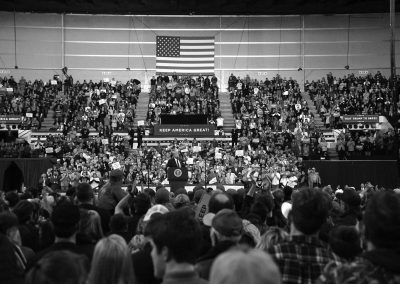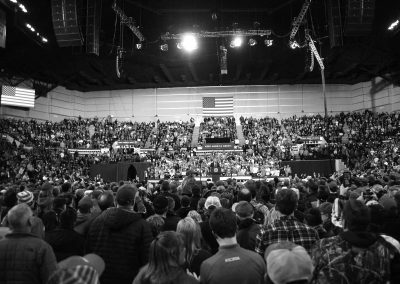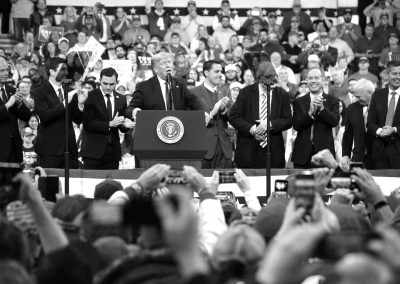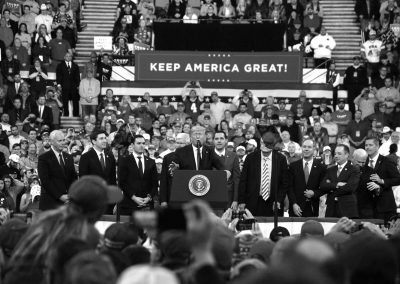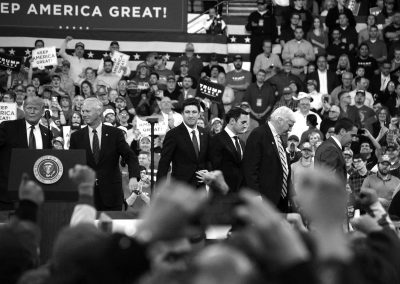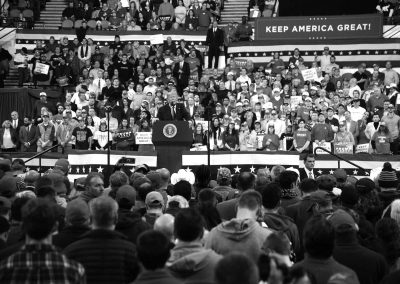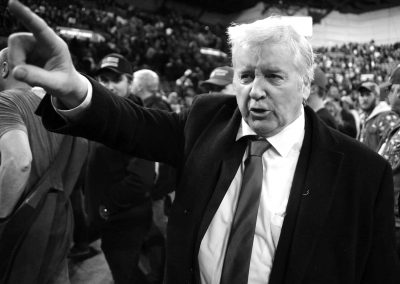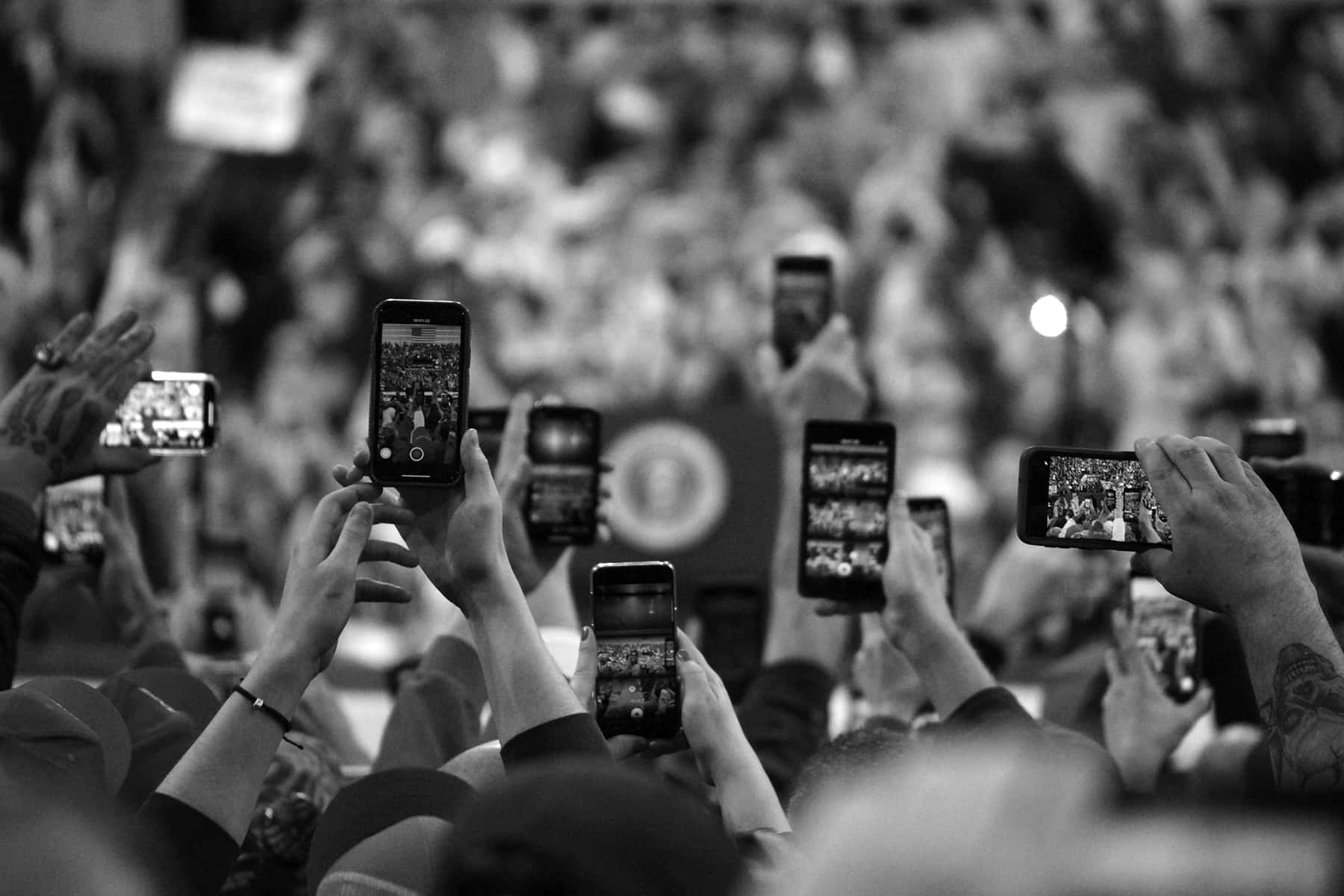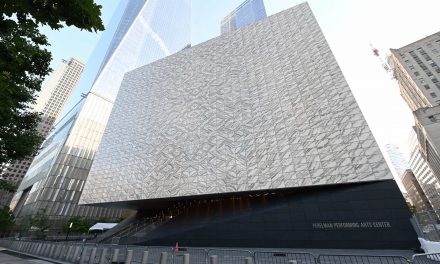
Donald J. Trump held his first public campaign rally within the City of Milwaukee as President on January 14 at the UW-Milwaukee Panther Arena, bringing his controversial policies and divisive rhetoric to the same turf that will host the Democratic National Convention to pick his challenger in six months.
The “Keep America Great” rally took place on the eve of preparations in the United States Senate to begin Trump’s impeachment trial. For residents of Milwaukee, the visit brought the national stage to their doorstep. While some traveled from out-of-state to be there, the crowds of people protesting Trump or attending the rally in his support were mostly local.
They were neighbors, family members, and co-workers, all on opposite sides of a dividing line that this president has used to dig a chasm into the very soul of the country.
History is not always a repeat of past events. However, there are often parallels that may not be fair but are offered as context to understand the impact of monumental events in real-time.
Milwaukee’s ongoing renaissance has come with a great deal of community reflection, to understand how past actions created current conditions. The 50th anniversary of the 1968 Open Housing Marches gave a new generation of residents a chance to explore the city’s racist legacy, and learn from the efforts that worked to push back the forces of segregation.
A trio of iconic pictures stand out from many taken during that Civil Rights Era, from the 1960s and 1970s in Milwaukee.
Members of the Klu Klux Klan protested open housing legislation in Wauwatosa around an American flag, a “White Power” organization also protested against the open housing measure along Forest Home Avenue, and a Neo Nazi group gathered in Humboldt Park to stop the desegregation of Milwaukee Public schools. The photos summarize the white social culture of the city, coming to terms with its prejudice about color.
After half a century, many of the participants captured in those images are still alive today. The individuals were not there by accident. They were purposeful in their decision to publicly share their feelings, often in a way designed to terrorize the opposition. History recorded them in the photos.
Trump’s rally had an emotional and philosophical similarity to what those vintage images represented. The people who showed up at the UW-Milwaukee Panther Arena did not arrive accidentally. Those outside protesting against Trump’s message of hate and those inside shouting their adoration in chants of “Keep America Great” chose a side. And just like in the Civil War that tore the nation apart over the slave culture that supported the owning of another human being by virtue of their skin color, each side at the rally believed that God was on their side of the divide.
After Trump departed from Wisconsin, both sides that attended his rally declared victory for their righteous cause. People on both sides of the line went back to their homes, in the neighborhoods that all Milwaukee residents shared. The aftermath left most people energized, further polarizing the “us” vs. “them” tribes.
Somehow, the people of Milwaukee have to live with each other and deal with these political differences. As evidence from the emotions displayed at the rally, it has not been a healthy condition. It is also hard to find a center point between both positions, especially when the situation is not evenly balanced.
This photo essay is a visual commentary of the environment surrounding the January 14 rally in Milwaukee. The images tell the story better than words, because they will speak to everyone differently, filling some with pride and others with frustration and sorrow.
The pictures capture this moment in history for a future generation of Milwaukee’s children to review and judge, as we do looking back at the images from open housing and school desegregation.
For now, there are very strong feelings that pit neighbor against neighbor, and family member against family member, a Civil War all but in the actual firing of a shot.
Lee Matz, Milwaukee County Historical Society, Milwaukee Public Library, and Pat A. Robinson
Milwaukee Independent is an award-winning and advertising-free daily news magazine that advocates for inclusive social understanding by publishing positive news content that covers a wide range of topics as a catalyst for community development. Our content is open to the public, with no access restrictions. As a nonprofit news organization, we are supported through charitable contributions from organizations and individuals in order to produce our activating, engaging, and solution-focused coverage of news in Milwaukee. Please consider supporting our work or making a donation.













